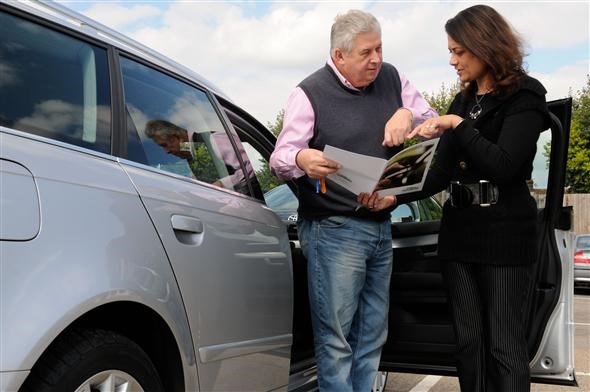When choosing your next family car there is a lot to consider – it can be a pretty daunting prospect.
First and foremost the car you choose needs to be practical enough to perform the school run, trips to the supermarket and carry everything a family needs for the annual holiday.
It needs to be reasonably priced too and cost effective to run with enough storage space in the back so your children can take toys and games with them on long journeys – hopefully preventing you getting kicked in the back for the whole trip.
But which car is best?
You may or may not have a rough idea of the car you’re looking to buy, but which engine is best for fuel economy? And what about the confusing trim names and the kit you get?
Parkers is here to help. Our guide will explain what you need to know and offer tips on how to choose the right family car for your needs.
Which body style?
There are four main body styles to choose from; hatchback, people carrier, saloon and estate. All appeal to family motorists but each have different strengths.
Hatchbacks generally have lower running costs and usually come well spec’d with equipment and present good value for money, but you will need to compromise on space.
People carriers are bigger, more practical and geared for family life with such things as flip-down tables, plenty of storage, sunroofs and connectors for game consoles/DVD players.
Estate cars combine the practicality of a people carrier and the hatchback’s lower running costs, but they do not always present the best value for money – especially some of the premium compact estates that are more about lifestyle statements than practicality.
Saloon cars are larger than hatchbacks and offer a big boot, but the opening on the boot isn’t usually as big while the load space is deeper. You can usually expect more interior space than a hatchback too.
Equipment checklist
Most new cars are now equipped with Bluetooth and it’s a useful feature if you are away without the children and need to be contacted immediately.
Getting lost is never fun, but imagine taking a wrong turn and finding yourself in unfamiliar territory with three children in the back? Sat-nav is usually available in higher trims as standard or as an optional extra in lower-level models. When included as an option prices can vary greatly from manufacturer to manufacturer so make sure you check the cost as a handheld sat-nav may be a better choice.
Cruise control is a useful feature and can make motorway travel more relaxing for you as a driver.
A large sunroof or a panoramic windscreen makes a car brighter and more airy, usually meaning a more pleasant journey for those in the back.
On long journeys, being able to charge games consoles or mobile phones is important. Make sure there are 12-volt sockets available and hopefully a USB port too.
Most new family cars will include air-conditioning as standard, but it is always worth double checking.
Figures and stats to look out for
- Euro NCAP rating – It is fairly unusual that a car does not achieve a five-star rating these days, but it is always best to check the figures and see how the cars compare on the individual, Adult, Child, Pedestrain and Safety Assist ratings.
- MPG – The official combined fuel consumption figures, although not completely representative of real world driving, are a good benchmark to compare other cars against each other.
- CO2 Emissions – How much tax you pay is directly linked with a car’s CO2 emissions. It’s simple – the lower the emissions, the lower your tax bill. You’re helping the environment at the same time, so the pandas will thank you.
- Insurance grouping – Insurance is a big contributing cost to running a car, a lower insurance group means cash savings.
- Warranty – It’s extremely important that when you buy a car you have the peace of mind that, if something goes wrong, you’ll be able to get it fixed with minimal hassle. Warranties vary from three to seven years dependent on which manufacturer you go with.
Petrol or diesel?
Diesel cars are generally more fuel efficient and road tax costs can be lower, but they are not for everyone because they are often much more expensive to buy and refuel than petrol cars.
You will need to travel a fair amount of miles each year for a diesel to make financial sense.
TOP TIP – When you test drive a car take with you a child’s seat and pram if you use them to make sure they easily fit. Take the kids with you too to get a real life feel for how the car will work day to day.
Our top family car picks
Reliable, robust and spacious, the Volkswagen Golf represents practical family transport that offers peace of mind. The TDI engines are very economical, and not forgetting the BlueMotion version has free road tax.
People Carrier – Citroen C4 Picasso
It’s a worthy addition to the compact people carrier class and drives very well on the road. Impressive practicality coupled with low running costs makes the Citroen C4 Picasso stand-out from its rivals.
The Skoda Octavia Estate offers cavernous space for both people and luggage, low running costs and very competitive pricing.
The 3 Series has a huge boot, is great to drive, is built extremely well inside and is also capable of very low running costs thanks to fuel-saving and emissions-reducing EfficientDynamics technology.





